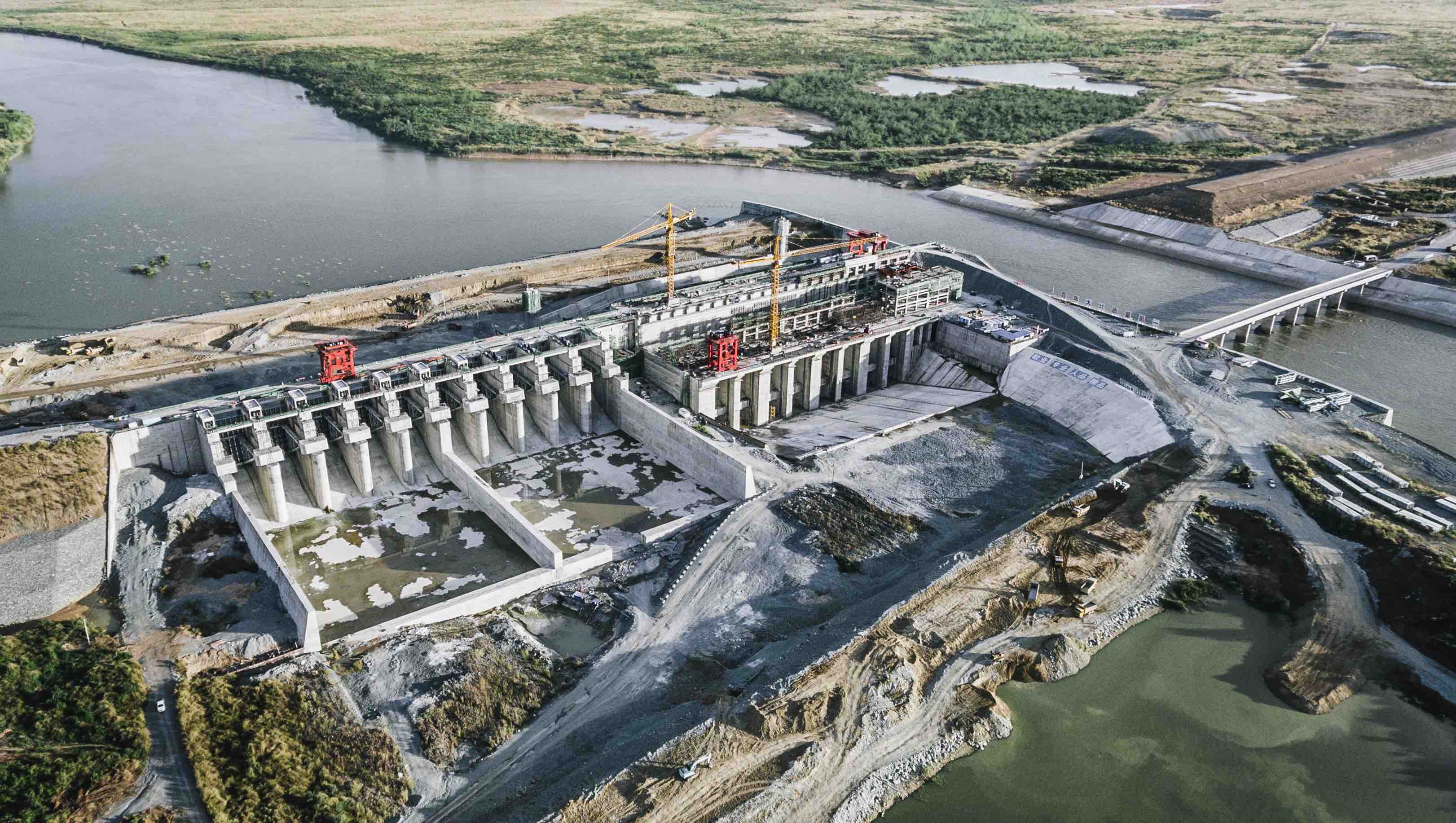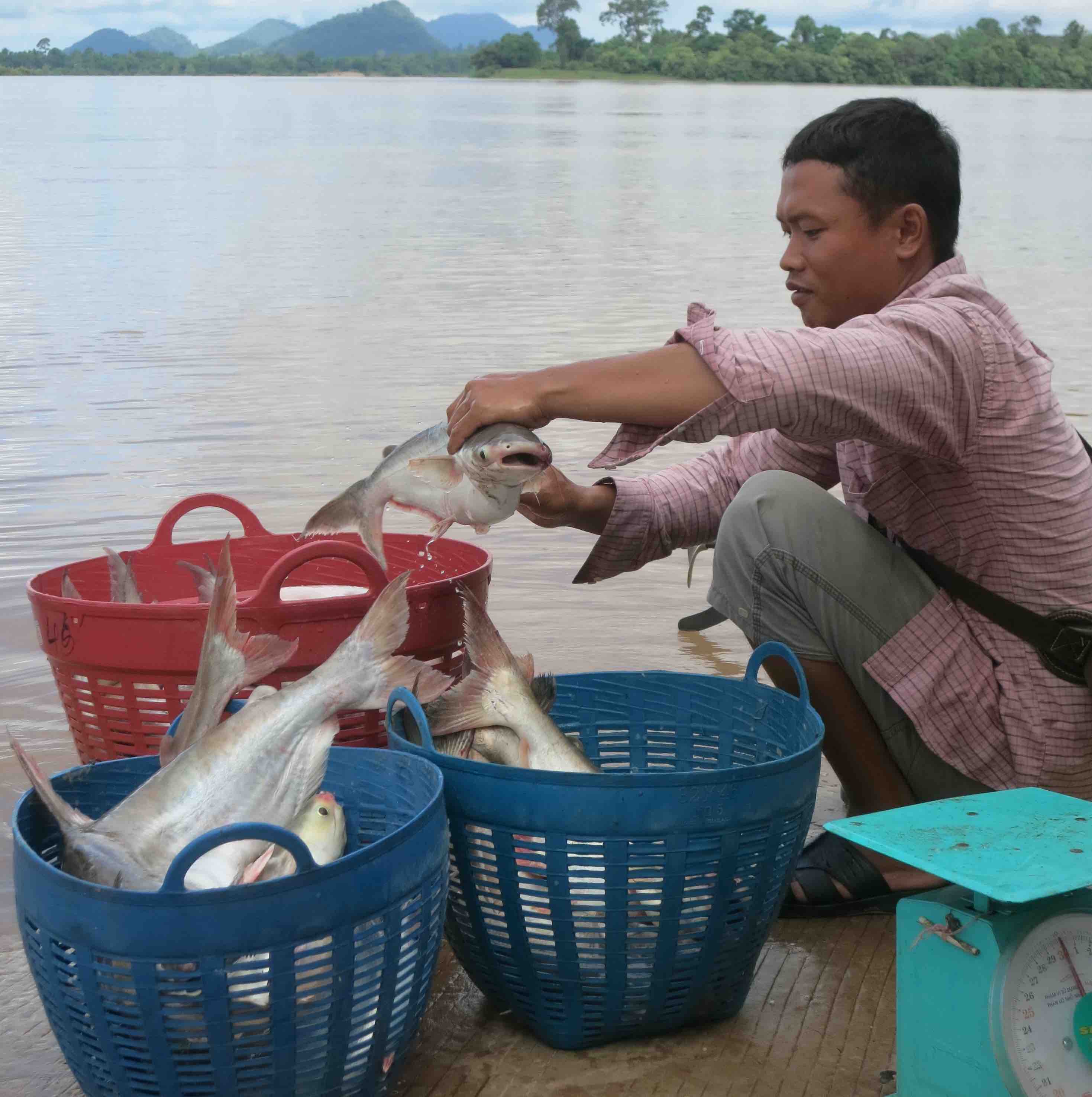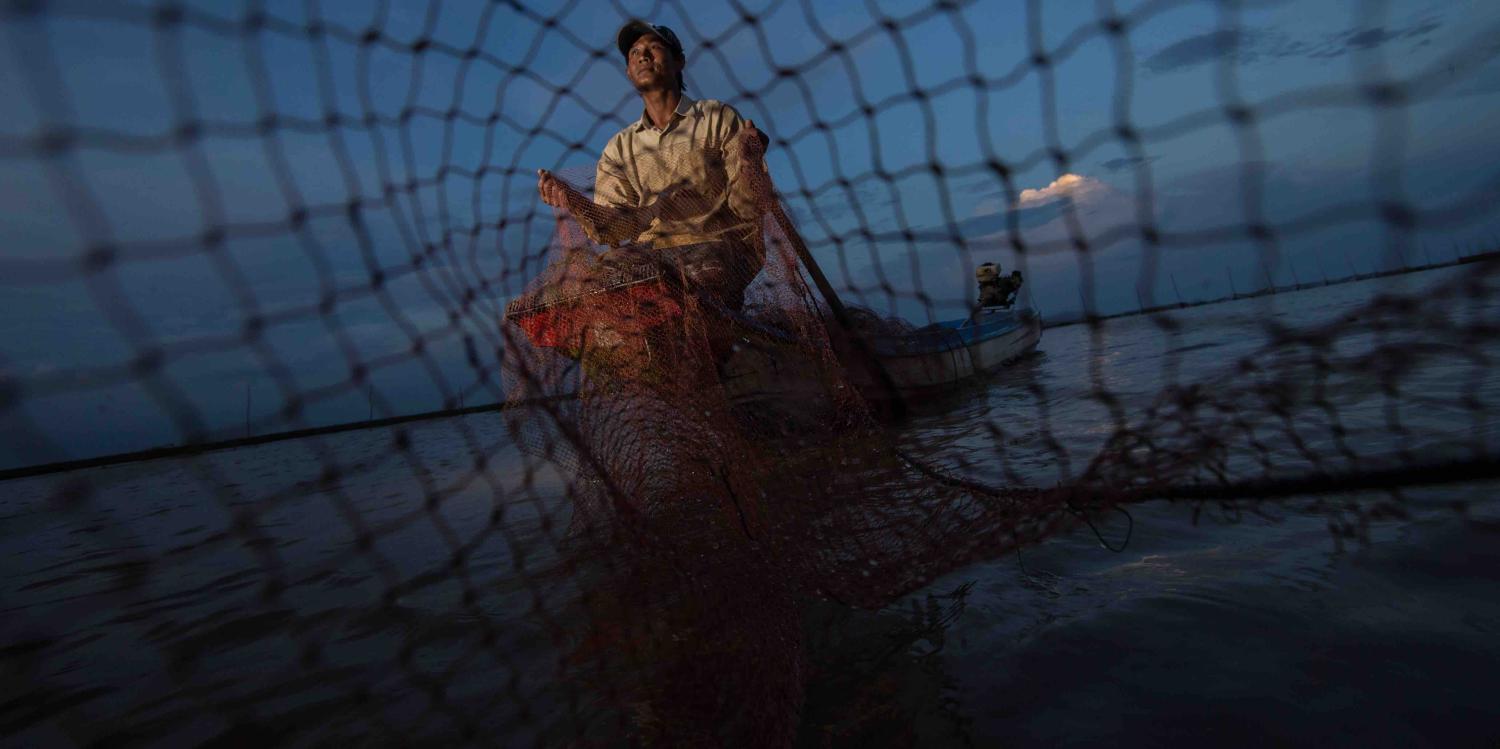The great biodiversity and precious resources of the Mekong are increasingly endangered by the rush to dam one of the world’s great rivers. A total of 11 mainstream dams and 120 dams on tributaries are planned, which scientists warn will imperil the already fragile river system. Recent studies call for a suspension and review of future projects.
The Mekong ranks as one of the world’s most productive inland fisheries. Its basin banks support a population of 60 million Thai, Laotians, Cambodians, and Vietnamese. But the amount of nutrient-rich sediment flowing downriver has already declined dramatically, so much that a UNESCO report has warned that Chinese dams built on the upper sections, known as Lancang, have caused a 70% reduction in sediment, which will adversely impact fisheries and rice production in Cambodia and Vietnam.
UNESCO, in the report written in partnership with the Stockholm Environment Institute, concludes:
If all the dams proposed for the Lower Mekong Basin are developed, including the planned or ongoing 11 mainstream dams, it could prevent up to 94% of the river’s sediment load from being transported further downstream.
Sediment is critical to the health of the river and essential for replenishing fish life. For Vietnam, the Mekong is crucial – a source from which the country draws approximately 50% of its foodstuffs, and which contributes more than 23% of its GDP. Vietnamese ecologist Nguyen Huu Thien is deeply worried about the next 15 to 20 years. “I am not sure how Vietnam can survive as a nation without the delta,” he said.

Yet scientific reports warning about the Mekong crisis have had little impact so far on regional policymakers, energy ministers, economists, and Chinese hydropower companies. These powers are so totally immersed in infrastructure development, energy supply, and GDP growth that they appear scarcely aware of (or perhaps just don’t care about) the other side of the growth equation. There is no social audit for the economic value of the erosion and loss of precious natural resources.
This gap in the cost-benefit analysis of dams prompted a pioneering report last year, “Economic Evaluation of Hydropower Projects in the Lower Mekong Basin”, which has been updated by an international research team based at the Natural Resources and Environment Management Research Centre (NREM) at Mae Fah Luang University in Chiang Rai, Thailand.
By using available data on fisheries, livelihoods, and other economic benefits, the study calculated that if all 11 dams go ahead, the economy of the lower Mekong will be set back a staggering $7.3 billion over the next fifty years.

One of the report’s authors, British economist David Wood, said previous economic forecasts provided by the Mekong River Commission (MRC) during their Basin Development Plan Phase 2 were based on several flawed assumptions, and “grossly underestimated the value of forecast losses to fisheries, while overestimated the value of hydropower to be produced”.
The MRC is a consultative body that facilitates cooperation between the four riparian governments of the lower Mekong – Laos, Cambodia, Thailand, and Vietnam – and the secretariat runs an extensive body of water resource specialists, economists, and technical experts.
In 2011, the MRC set the regional benefit from hydropower at more than $30 billion for the 11-dam scenario. But Wood said this figure exaggerated the value of electricity sales derived from dams while underestimating both the size of the fish catch in the river and its market value:
If you add up losses from fisheries, sediment and social impacts, they are far greater than the benefits from hydropower.
Since that time, the MRC Fisheries Department has attempted to correct the previous miscalculations by publishing a subsequent 2016 study. This estimated the total value of wild capture fish in the four MRC countries of the lower Mekong at $11 billion.
Cambodia would be hit especially hard. Few countries in the world are more dependent on fish consumption than Cambodia, where fish provide 80% of the population’s annual protein intake and account for approximately 12% of GDP.
In February, the MRC released a revised perspective on hydropower impacts in a long-awaited report. This moved a long way towards recognising the dire consequences of the current course in managing the Mekong’s water resources, and appears to vindicate the claim that earlier estimates got it wrong.
The MRC study’s coordinator, Suthy Heng, told me the two studies were completed at different times. “We judge that the findings for both studies were relevant given their respective data, methodologies, and timeframes.”
When it began more than more 20 years ago, the intellectual debate over eco-services kickstarted a new recognition of the importance of rivers in the life of a nation, not only in terms of ecology but also economy. The assumption is that the full range of benefits from the eco-services of a river extend far beyond fisheries, and must consider lost revenue and wide-ranging losses of livelihood, nutrition and health, transportation, tourism, and nature conservation.
The field of eco-service studies is a relatively new branch of resource economics which has been criticised for an absence of precise data and a reliance on varying estimates. Apisom Intralawan, a team leader of the study into hydropower and the Mekong dams, accepts the research is not based on certainty. But he said the doubts in applying an eco-services valuation are far better than putting a zero value on such services.
Robert Costanza, a professor of public policy at the Australian National University, has said policy debates in most countries are still dominated by narrow, mainstream economic ideas and policies:
The critical importance of ecosystem services challenges the conventional approach to growth and development, while paving the way for a different approach to prosperity based on well-being.
Costanza warns that ignoring the long-term effects of large dams, the intrinsic value of eco-resources, and the regional consensus of energy and development specialists backed by international agencies has contributed to the current crisis of the longest river in Southeast Asia.
Apisom and his team go further, strongly urging a delay in the construction of dams until the Xayaburi Dam in northern Laos is completed and the effectiveness of mitigation measures, including fish passes and sediment sluice gates, has been clearly demonstrated.
Given that alternative sources of energy are readily available, the call for a moratorium on dam-building is clearly the least risky policy option and the only way to protect both the fisheries and the riparian peoples of the Mekong.

